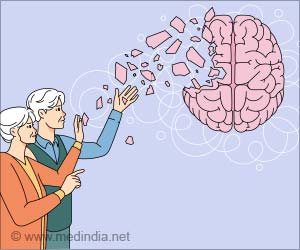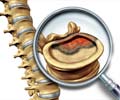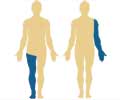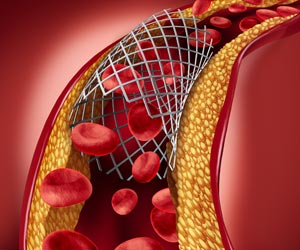Researchers found that treatments helping to repair nerve damage in neurons in a near-embryonic state might potentially restore sight and movement.

‘‘Therapies targeting genes, signaling molecules, and injury site environment that encourage regrowth of nerve cells could restore lost vision and body movement.#blindness #vision loss #paralysis’’





Glaucoma alone affects more than 3 million people in the US. Nerve damage leading to paralysis is similarly common, with around 5 million people in the US living with some form of it. Although blindness and paralysis may seem quite different.Can Nerve Damage Heal on Its Own?
Many types of these two conditions share the same underlying cause: nerves whose axons, the long fibers that connect the nerve to the brain or spinal cord, are severed and never grow back. Axons act like wires, conducting electrical impulses from various parts of the body to the central nervous system (1✔ ✔Trusted SourceReaching the brain: Advances in optic nerve regeneration
Go to source).
If a wire is cut, it cannot transmit signals and the connection goes dead. Similarly, if the axons in the optic nerve cannot reach the brain, or the axons from your toe cannot connect to the spinal cord, you will not be able to see from that eye or move your toe.
Some animals can regrow axons, but mammals such as mice and humans cannot. It was assumed that mammals lack the immature nerve cells that would be needed. But a team of researchers in the lab has found the existence of neurons that behave similarly to embryonic nerve cells.
They express a similar subset of genes and can be experimentally stimulated to regrow long-distance axons that, under the right circumstances, could lead to the healing of some vision problems caused by nerve damage.
Moreover, the researchers found that mitochondria-associated Dynlt1a and Lars2 genes were upregulated in these neurons during experimental axon regeneration and that activating them through gene therapy in injured neurons promoted axon regeneration, thereby identifying these genes as novel therapeutic targets.
Methods Speeding Up Repair of Injured Nerves May Restore Sight and Movement
Researchers believe that similar immature nerve cells exist in regions of the brain outside the visual system too, and might also heal some features of paralysis under the right circumstances. The right circumstances are difficult to provide, though (2✔ ✔Trusted SourcePten inhibition dedifferentiates long-distance axon-regenerating intrinsically photosensitive retinal ganglion cells and upregulates mitochondria-associated Dynlt1a and Lars2
Go to source).
Advertisement
Previous research has shown a combination of cell maturity, gene activity, signaling molecules within the axons, as well as scarring and inflammation in the injury site, all seem to inhibit axons from regrowing.
Advertisement
Researchers began looking at how another type of cell, oligodendrocytes, was behaving. If axons are the wires of the nervous system, oligodendrocytes make the insulation. Called myelin, it insulates the axons and improves conductivity. It also—and this is key—prevents the axons from growing extra, extraneous connections.
Typically, axons in embryos grow to their full length before they are coated with myelin. But they found that in these injury sites, the cells that apply myelin start interacting with the regenerating axons shortly after they begin growing.
That interaction, which precedes the insulation process, contributes to the axons stalling out so that they never reach their targets.
Hence, researchers suggest that a multi-pronged approach would be needed to fully regenerate injured axons. Therapies that target both the gene and signaling activity within the nerve cells would be necessary to encourage them to grow as an embryonic nerve cell would (3✔ ✔Trusted Source
Facilitation of axon regeneration by enhancing mitochondrial transport and rescuing energy deficits
Go to source).
And clearing the environment of inhibitory molecules and pausing oligodendrocytes from insulating would give the axons time to reconnect with their targets in the central nervous system before being myelinated. Then, treatments that encourage oligodendrocytes to myelinate the axons would complete the healing process.
Although in some types of complex injuries protection by myelination of still intact but demyelinated axons from ensuing inflammatory damage may take precedence, ultimately secondary inflammatory damage may be controlled pharmacologically, paving the way for pausing myelination and unhindered therapeutic axon regeneration for these types of lesions as well.
The new insights into how axons grow could someday create a path for truly effective therapies for blindness, paralysis, and other disorders caused by nerve damage. The researchers are currently working on a deeper understanding of the molecular mechanisms behind both axon growth and interaction with oligodendrocytes.
References:
- Reaching the brain: Advances in optic nerve regeneration - (https://www.sciencedirect.com/science/article/abs/pii/S0014488615301412)
- Pten inhibition dedifferentiates long-distance axon-regenerating intrinsically photosensitive retinal ganglion cells and upregulates mitochondria-associated Dynlt1a and Lars2 - (https://journals.biologists.com/dev/article/150/8/dev201644/307159)
- Facilitation of axon regeneration by enhancing mitochondrial transport and rescuing energy deficits - (https://rupress.org/jcb/article/214/1/103/38683/Facilitation-of-axon-regeneration-by-enhancing)
Source-Eurekalert















